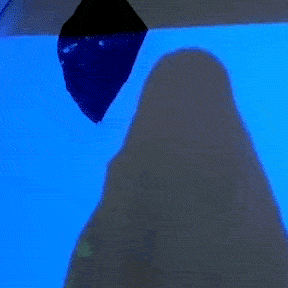2021-2022 COOP study group ~ Curating Positions: Nostalgia for the light*: Struggles’ Reverberations in Cinema
Tutor team:
Guests:
Student participants:
Lucas Lugarinho Braga, Miyoung Chang, Laura Dubourjal, Elisa Giuliano, Maud Gyssels, velvet leigh, Chiara Pagano, Iga Świeściak, Lau ten Zeldam, Rhodé Visser.
Partner:
Bulegoa z/b
Student led reflection:
Introduction to the program:
Images appear, disappear and re-appear, reminding us of their transformative potential. Some are bearers of a reverberating force that rekindles past struggles. Others help us be aware of the visual structure that subdues, domesticates and reduces them to prevent constructing alternative models of society. Others accompany us to invent new paths of connecting the past with the present to open possible spaces of temporal cohabitation. Finally, images spiral back, bringing specters of a past that returns with them, showing us their complex relation to time and history.
In this year’s Curating Positions COOP we will look at the resonance of specific struggles in the cinematic space, the way they re-appear in films and revitalize desires for collectivity under contemporary conditions. We would like to explore a history of so called militant cinema in order to expand on this category and redefine our understanding of the militant image today. This would include feminist, queer, ecological, anti-fascist, anti-racist, what is usually known by the category of militant, third cinema and more.
Historically the embeddedness of filmmakers and artists in some political movements have been crucial for the documentation, the historicisation and the archiving of political struggles as well as shaping of new cinematic forms. They have also been at the center of the circulation of images and of internationalist solidarity building. The question we would like to ask is what role do they still play in today’s political realities? What relevance artists’ political films and cinema still has in an era of digital activism and where social media has become the most prominent platform for the so called “share and re-post activism”. What forms are needed for our struggles today?
As Mark Fisher points in his text “The land still lies: Handsworth Songs and the English riots.”
“The lesson to be remembered – especially now that we are being asked to defend abortion and oppose the death penalty again – is that struggles are never definitively won. As the academic George Shire pointed out… many struggles have not been lost so much as diverted into what he called “the privatisation of politics”, as former activists become hired as ‘consultants’.” *
Following this quote, we come to the understanding that struggles are never resolved with a happy ending, they keep coming back and burst out in unexpected moments. However, their insistent reverberations have shaped the most experimental cinematic forms and modes of producing cinema, proposing arrangements equally emancipatory as the organizations they were part of.
Thinking about the movement of history from the place of struggle, we would like to start wondering to what extent certain cinematic images come back in order to instigate a reflection on our defeats, victories and the latency of the revolutionary drive.
Most importantly we would like to open the possibility of learning from these films and their radical forms and aesthetics. Cinema is the haunted shelter of bodies, anti-bodies, sonic appearances, non-human specters, extra- and terrestrial elements. Will these give us the possibility to rethink the fragmentation of struggle in our neoliberal world? Or the “privatization of politics” to quote Mark Fisher again.
From Monti’s “Scuola Senza Fine”* that puts forward working-class women’s strive to collectivize and self-educate, to Guzman’s “Nostalgia for the Light” that looks for the remainders and the dust of Pinochet’s massacres, to Akomfrah’s “Handsworth Songs”* that recalls past struggles through archival films, to “Off Frame Aka Revolution until Victory”* that has used the archives of the restored and recuperated films and imagery of the Palestinian struggle, to Jarman’s “The Garden”* that echoes queer peoples’ efforts to maintain careful and sustaining relations with surroundings and those considered sick. Along with films like “Le Bâteau de l’Exil”* and “Leila and the Wolves”*, that picture womens’ contribution to resistance struggles throughout history.
In other words, this COOP aims to keep studying outside imaginaries that still live within cinema in order to confront the patriarchal capitalist visual worlds, thus, allowing other forms of re-inhabiting the image. Curating Positions COOP will also continue exploring new approaches in-between genres like film, performance, choreography, sound and curating.
*Nostalgia for the Light, Patricio Guzman, 2010.
*“The land still lies: Handsworth Songs and the English riots. Mark Fisher reflects on a screening of Handsworth Songs, the Black Audio Film Collective’s 1986 essay on Black Britain, in the wake of the new wave of civil unrest in summer 2011.”
*Scuola Senza Fine, Adriana Monti, 1983.
*Handsworth Songs, John Akomfrah, 1986.
*Off Frame Aka Revolution Until Victory, Mohanad Yaqubi, 2015.
*The Garden, Derek Jarman, 1990.
*Le Bâteau de l’Exil, Jocelyne Saab, 1982.
*Leila and the Wolves, Heiny Srour, 1984.

